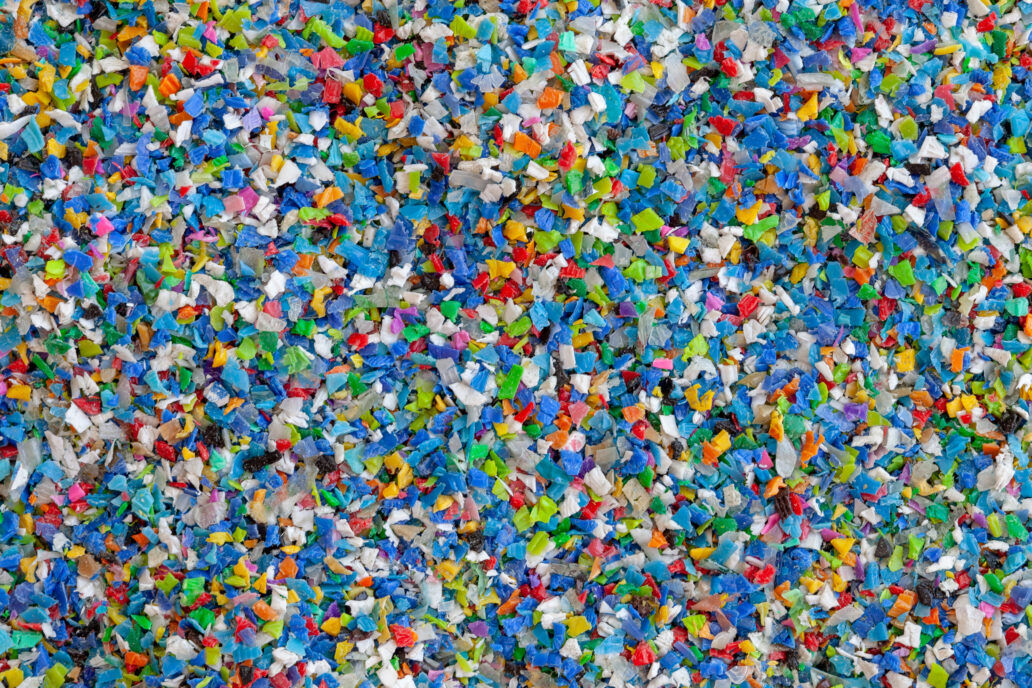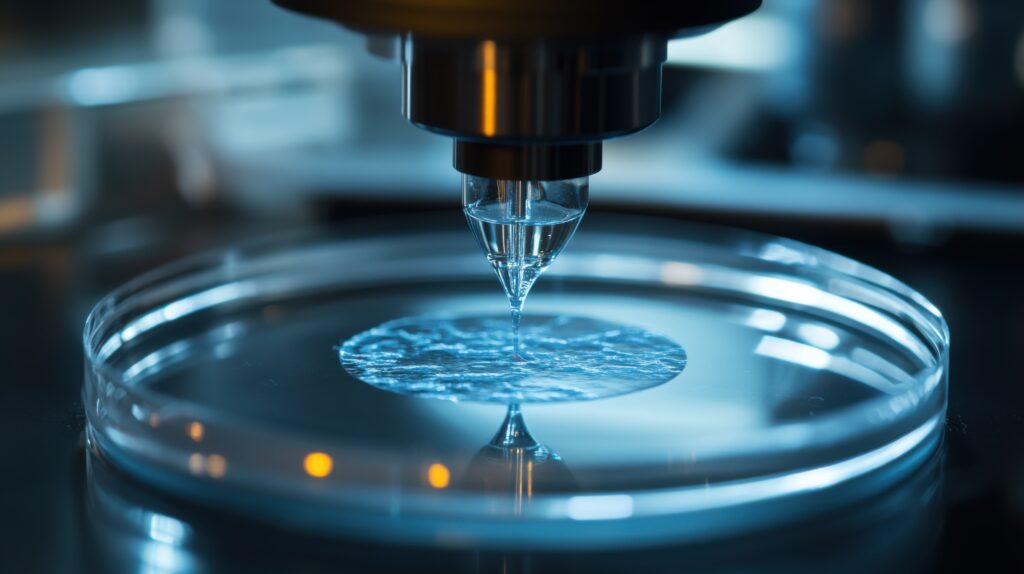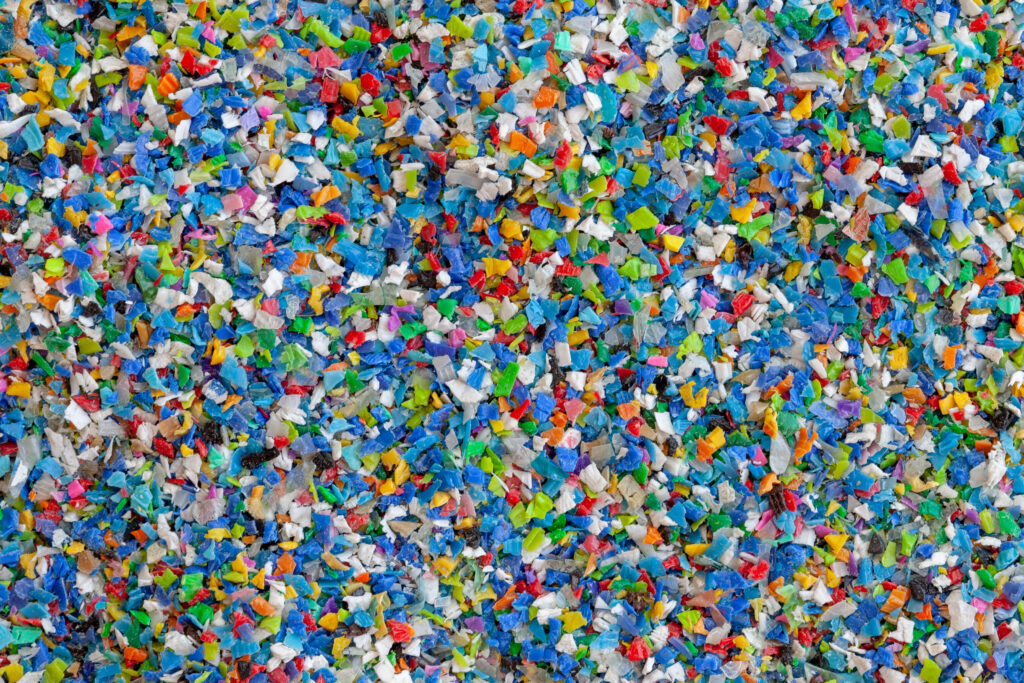
MedTech Recycling and Innovation Opportunities for Earth Day 2025
For Earth Day 2025, we asked our employees to share MedTech recycling and innovation opportunities and obstacles. We invite everyone in medical device development and healthcare to unite behind MedTech recycling and innovation.
MedTech Recycling Opportunities and Obstacles
Help turn back the hospital trend of it’s easier, faster, and simpler to not reprocess or sterilize contaminated medical devices. There is a general move towards disposables because they’re faster, easier, simpler. They are cheaper for the hospital because the environmental costs are not borne by the users.
Consider a syringe: current standard practice is go to inventory, pick up a prepackaged disposable syringe, open the sterile syringe packaging, throw away the packaging, use the syringe and throw it away as well. How easy is that? Back in the day, high quality syringes couldn’t be made cheaply enough to be disposable. Glass syringes ruled. They had to put in a bin after each use, then reprocessed. This approach had downsides of time and possible contamination issues, but that doesn’t mean there isn’t a better way to re-use syringes. This is an opportunity for innovation and recycling!
Design For Cleanability One barrier to reprocessing is expertise in design for cleanability. There are things that can be done on the design side for cleanability to make sure devices can be cleaned and go through reprocessing easily without high risks.
Similarly, consider Design for “Part Reduction” or “Instrument Consolidation” to reduce the number or complexity of instruments or components in any device. And Design for “Serviceability” by designing enclosures that allow access to components which are most likely to fail in the field (for example). Package several components of a sterile device together instead of separately and individually packaged.
Obstacle Alert: Something that can be reused and sterilized will be more challenging to prove it is safe.
Aspirational Recycling Goal: Get away from paper. Going beyond recycling, use electronic DHRs, electronic checklists and iPads on the manufacturing floor. Zero paper would be a great goal for MedTech companies to work towards.
MedTech Renewable Energy Opportunities and Obstacles
Use new biodegradable plastics. Sometimes plastic is used because of clean room requirements – bringing cardboard into a clean room is fundamentally problematic due to fiber sloughing. There is an opportunity for innovation in reusable or biodegradable materials that can be used in a clean room. Packaging engineers and technicians should consider using new materials made from biodegradable materials because they break down faster. All sorts of new bioplastics coming out. These can be used for packaging, such as fill peanuts and films. Polylactic acid is an example, derived from cornstarch and can be formulated to break down in composting environments. There is a lot of value in creating methane to burn rather than throwing away polyethylene or polystyrene to blow in the wind or go into the ocean and rivers.
Expectations and Behavior
Brown is Out, Grey is In. It takes time to change consumer expectations and behavior. For example, many people think brown is the natural color of recycled paper, when in fact the natural color is a much more of a gray. Consumers currently think going to the grocery store and choosing brown paper bags and looking for items in brown boxes might be the right choice because they believe brown cardboard is the most sustainable. The uniquely colored things that look kind of gray or dull purple are probably a lot more sustainable and come from recycled plastic. Communication, labelling and education is needed for a shift in consumer expectations and behavior.
Procure Sustainable Brands. Hospital procurement, healthcare supply, and medical device OEMs can add sustainability to their supply chain goals in addition to safety, efficacy and cost. That commitment adds to their brand and would help users and patients feel they are helping reduce waste.
Obstacle Alert: Hospital procurementteams look to reduce risks. Environmental and sustainability goals are tertiary, if not further down the list. Any sustainable solution would need to make sure the patient is satisfied, the user is not negatively impacted, and the costs of delivery and service do not substantially increase.
Organizations Need Guidelines to Support Sustainable Brands. They require leadership, help and resources to determine what sustainability means for their organization and what level of sustainability should be required for suppliers to align to their values. Many companies that have spent time defining what sustainability is have been able to achieve their “no harm” goals and net zero or regeneration targets. Try not to reinvent the wheel. Instead, leverage what already exists. Avoid using sustainability as a marketing campaign. Instead embed it in core values and company vision.
Obstacle Alert: Some companies may sell a recyclable device while doing other things that aren’t good for the environment. It’s important to set guidelines so consumer and purchasing groups can recognize companies that are net positive sustainable versus being duped by wily marketing.
Avoid greenwashing. Greenwashing (a form of advertising or marketing spin that deceptively uses green PR and green marketing to persuade the public that an organization’s products, goals, or policies are environmentally friendly) can leave a negative impact. Be genuine about your decisions, define what sustainability is to your organization.
MedTech Innovation Opportunities and Obstacles
Recyclable Materials With A Bio Burden Can’t Be Recycled in the Standard Way. An area for innovation is figuring out how to recycle these materials safely and sustainably. Biohazardous waste material like polystyrene produced in the lab can be burned and run through a turbine to create energy, for example. This is currently being done on a small scale. Innovation could greatly improve and expand the adoption.
Microbiology labs currently produce tons of non-recyclable plastic materials and things. Many lab technicians cry for the planet and would welcome innovative solutions.
Imagine surgical tools made from recycled surgical tools or repurposed forceps. Hospitals generate vast quantities of medical waste every year, including used surgical instruments (scalpels, forceps, scissors, and stainless-steel tools) that rely heavily on mined metals such as stainless steel, titanium, and aluminum. These could become raw materials for new tools.
During design, reduce the number of components that are thrown away. Isolate parts that may need to get serviced, so that a smaller number of parts are replaced instead of replacing and tossing a complex sub-assembly from a device. Make it easy to wipe down and clean durable goods and devices such as consoles and carts.
Obstacle Alert: It’s labor intensive and potentially biologically hazardous to clean or recycle some medical device components.
Add a sustainability factor to internal processes. For example, include ‘environment impact’ in design reviews, requirements documents, and internal guidance. Doing this throughout the design and development process will avoid the “that ship has sailed” issue of attempting to collect resources to redesign in pre-production.
Obstacle Alert: A challenge in using a new material o is the need to de-risk things downstream during the product development process and registration. Imagine something that is biodegradable and has a requirement for shelf life up to five years’ stability. Those two factors might conflict with each other. Verification, validation, and certification of a novel material can become a heavy load when a new device that’s already risky.
MedTech Recycling and Innovation Summary
This Earth Day blog was inspired by discussions Nigel Syrotuck held with colleagues, Brent Bailey, Charm Lynn and Sanjay Bala Balasubramanian. We hope the ideas and examples of MedTech recycling and innovation opportunities inspire others in medical device development and healthcare to unite behind renewable energy, MedTech recycling and innovation. Here is Brent’s contribution from the initial discussions.
“I can still remember delivering my first surgical robot to a customer site, and unpackaging the device in a hallway. The robot arrived on a pallet and covered by a large cardboard box, with the different components individually packaged in their own cardboard boxes inside. All this packaging was tested to ensure that everything would withstand the rigors of transportation, which did very well.
I would open the boxes, remove the components and push the packaging to one side to ensure that the gurneys could roll by. After a while the packaging pile became huge: much larger than the size of the pallet. Asking the hospital staff what I should do with all this packaging raised an eyebrow. “You need to dispose of it” was their response. It was then that I discovered that not all hospitals will take responsibility for the packaging, even recyclables, that your device comes in.
After that, we ended up developing a shipping cart that would be sent back to the manufacturing site after each delivery. Not only was this reuseable cart more environmentally friendly, but it also improved workflow at both the shipping and receiving sites. The manufacturing technicians just needed to roll the device into the cart and tie it down, making their jobs faster and easier. At the hospital, the support and implementation staff were able to roll it off in minutes instead of an hour or more.
Using recyclable materials is a great benefit to the environment, but reuse can create other benefits that you didn’t initially foresee.”
Brent Bailey, Senior Systems Designer
Astero StarFish is the attributed author of StarFish Medical team blogs. We value teamwork and collaborate on all of our medical device development projects.
Images: Adobe Stock
Related Resources

Being able to control the release rate of a target molecule is a valuable tool for engineering tissues and therapeutic delivery of regenerative medicine applications.

In this episode of Bio Break, Nick and Joris dive into one of the most astonishing—and real—medical innovations we’ve ever come across: osteo-odonto-keratoprosthesis. Or, as Nick quickly dubs it, “tooth in eye surgery.”

For Earth Day 2025, we asked our employees to share medtech recycling and innovation opportunities and obstacles. We invite everyone in medical device development and healthcare to unite behind medtech recycling and innovation.

The human eye is an extremely delicate organ, often prone to irritation, dryness and various diseases, such as glaucoma, cataracts, keratoconus, age-related macular degeneration, and many others. These ocular clinical conditions also affect patients’ quality of life.